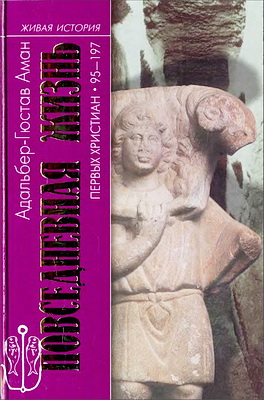
Hindson - The Popular Encyclopedia of Apologetics - модуль BibleQuote
Hindson - The Popular Encyclopedia of Apologetics
Eugene, OR: Harvest House Publishers, 2008. – 502 p.
ISBN-13: 978-0736920841
"It is no longer enough for you Christians to believe something. We won't accept simple belief. You have to be able to explain your belief and defend them to a growing number of skeptics who do not hold your assumptions. Step up to the plate, or stop trying to present Christianity as a valid system!"
In the spring of 2007, Ergun debated a group of atheists. The debate was broadcast on the radio and Internet, and became one of the most downloaded programs of the genre. A listener phoned in and presented a simple premise: Either defend Christianity in the midst of the marketplace, or stop believing. For about four hours, Ergun presented Christianity using reason, logic, and evidence. The quote above is from someone who was responding to a previous caller, a self-proclaimed Christian. She said evidence was not necessary for faith in Jesus Christ. As long as we believed, that was enough. The subsequent caller attacked that premise.
Perhaps on one level, he was right. Skeptics often state that Christians seem to exist in a bubble. That is, we preach sermons to Christians, debate each other, and write books that only interest other Christians. Rarely do we as Christians venture out into the marketplace of ideas to ply our trade of defending Christianity.
That is the purpose of this book. We wanted to place in your hands a root that will enable you to both defend your faith and answer the major objections to Christianity. More specifically, we wanted to provide a resource that is accessible to every Christian--a popular encyclopedia that avoids the technical jargon of specialists while cogently presenting a Christian response to skeptics and cynics.
This type of approach is not new. In fact, the leaders of the early church obviously believed in defending their faith. Ignatius, the Bishop of Antioch, who was martyred in a.d. 107, argued that if Christians did not know how to reasonably reply to genuine questions, then they would be susceptible to "dumb dogs, that cannot bark, raving mad, and biting secretly, against whom you must be on your guard, since they labor under an incurable disease" (To the Ephesians, chapter 7, in The Ante-Nicene Fathers, 1:107).
Throughout the centuries, Christianity has been an intellectual faith and a heartfelt system. Christians do not "check their minds at the door" and believe any random teaching that happens to sound good. We are a people who learn to discern good from evil and defend Christ as the Hope of Glory. In a chaotic world of competing worldviews, we can do no less.
Therefore, the editors have enlisted more than 60 authors who are experts in their respective fields, asking them to write articles designed to give you the best possible answers to honest queries. These 180 articles are the result and comprise a one-volume resource that is rich in detail and truth. Each author is an evangelical scholar, and the articles examine some of the most compelling and contemporary issues we face. The articles are readable, practical, and profound. We pray it serves you, a Christian, as a worthy instrument in the battle for truth.
* * *
ANIMISM
Animism is the general term for a broad category of belief systems that embrace the worship of natural or visible representations of deities. Though usually found in primitive societies and nonliterate cultures, some advanced cultures have people groups that hold to the worship of items allegedly infused with spiritual forces. Another term for animism is folk religion.
The term animism is derived from the Latin word anima, meaning "soul." In 1871, Sir Edward Burnett Tylor, the British anthropologist and author, wrote that animism is the most primitive and basic form of worship (p. 61). Examples of animism include ancestral worship, totem poles, volcanic gods, and the investment of god-souls in animals, trees, and plants. In the larger sense, animism can include any form of worship of forces rather than a god or gods. In this sense, animism could include sorcery, superstition, magic, and witchcraft.
IDOLATRY
Historically, it can be argued that animism is the oldest form of religion apart from God. With the building of the Tower of Babel (Genesis 11:1-9), and God's subsequent punishment of confusing the people's language, the alleged result would be the development of indigenous forms of idolatry rather than the unified system of man-centered worship that compelled the building of the Tower in the first place. Others have argued that prior to the Flood, animism already was developing as a form of idolatry.
The Hebrew word for "graven image" is pecel, from the root pacal, which means "to cut," or to "shape by one's hand." The term likeness is from the Hebrew term tahmuwnah, which means a "resemblance to something recognized." Thus, the argument would continue, the idolaters were guilty of making, by their own hands, representations of items they recognized in order to worship them. In the absence of authentic worship, the idolaters
would worship the visceral and the visual forms found in nature. This is animism.
PROJECTIONS OF NATURE
Typically, animism is seen as a projected god or gods within plants, animals, or inanimate objects. Among the aboriginal peoples of the Americas, the rice or maize/corn mother was worshipped. This makes sense because their cultures depended upon these crops. Classic Greco-Roman mythologies included elements of animism, for example, by giving the satyrs the feet of goats. South American cultures, many of which are based around the Amazon River and its tributaries, worship such items as trees, fire, or predatory animals. Other forms of folk religion ascribe divine status to locations such as mountains or caves.
ANCESTRAL WORSHIP
A final category of animism is ancestral--the worship of dead family members or for-bearers. This practice, known as necromancy, attempts to communicate with the dead for the purposes of gaining insight, knowledge, or guidance. These dead predecessors are viewed in divine terms because they had knowledge the living do not have. In the Bible, Manasseh was said to practice this type of worship. "He sacrificed his sons in the fire in the Valley of Ben Hinnom, practiced sorcery, divination and witchcraft, and consulted mediums and spiritists. He did much evil in the eyes of the Lord, provoking him to anger" (2 Chronicles 33:6; cf. 2 Kings 21:6).
IMPLICATIONS
Theologically, animism does have the advantage of dispelling the notion of natural atheism. The literal sense of the term atheist is misleading in that it describes a lack of knowledge of any being external of, or higher than, God. It is a misnomer because history has never discovered any group that did not worship something. Though animism is the most archaic form of worship, all people groups in every region of the world have been discovered to worship something external from themselves. These deities were seen as supreme, and the people were viewed as subjected to the judgments and whims of these divine entities.
The motivations for animistic worship follow common themes as well. The worldview behind animism dictates that these unseen forces control the seen world and manipulate it at will. The motivation of power also flows from animism. The spiritual leader in these groups, often operating as a shaman, is ascribed great respect and power. Superstition is a great force within animism. Virtually all animistic systems are polytheistic, affirming many gods who often operate in a hierarchy.
For the Christian, animism can be found among other systems of primitive sorcery, such as those described in Deuteronomy 18:10: "Let no one be found among you who sacrifices his son or daughter in the fire, who practices divination, sorcery, interprets omens, engages in witchcraft, or casts spells, or who consults the dead."
Confronting animism causes some Christians concern. However, we must remember that Christ's indwelling has brought us victory over such forces. Colossians 2:15 admonishes us that Christ has "disarmed the powers and authorities, [making] a public spectacle of them, triumphing over them by the cross."
Ergun Caner
BIBLIOGRAPHY
- Anderson, Norman. The World's Religions. Leicester. UK: InterVarsity Press. 1975.
- Hiebert, Paul, Daniel Shaw, and Tite Tienou. Understanding Folk Religion. Grand Rapids: Baker, 1999.
- Richardson, Don. Eternity in their Hearts. Ventura, CA: Regal, 1984.
- Tylor, Edwin Burnett. Religion in Primitive Culture. San Francisco: Harper, 1871, 1958.
MYTHOLOGY
In the classic sense, a mythology is a set of stories that explain the history of a people, their beliefs, or their practices. While every culture has a story, a mythology attempts to explain the existence of that culture in terms of a cosmic battle. Many mythologies have unbelievable stories of warring planets and stories of gods fighting for celestial women. All mythologies, however, attempt to establish a system of practices for the listeners. The purpose of following these teachings is simple: either carry out the wishes of the gods, or suffer the consequences.
Major mythologies rise to a level far beyond regional interest. Greek and Roman mythologies affect our calendar. For example, January, the first month in our Gregorian calendar, begins ten days after winter solstice. It is named after Janus, the Roman god of doorways and beginnings. Even though our Western culture does not embrace these teachings, the use of the term January has existed for 2,000 years.
Two other major mythologies affect evangelicals living in Western civilization. Scandinavian mythology introduces the term Valhalla into our common dictionary. In Norse mythology, Valhalla is actually the hall of Odin, the god of wisdom and war. This Viking god is the Norse supreme deity and ruler of all creation. In primitive Scandinavian culture, this teaching was introduced to explain where man goes after death. Odin stands in a vast hall, surrounded by gilded gold and jewels and welcomes the souls of brave warriors who died in battle.
Native American mythologies are much more complex. Greek, Roman, and Norse mythologies developed very strict codes and responsibilities for their gods. They have a set number of cosmic warriors who serve very limited roles. In Native American tribes, however, the number of mythologies is as vast as the number of societies themselves. Every tribe has a hero (Great Spirit), who may or may not interact with the cosmic heroes of other tribal mythologies. The Navajo teach that in the beginning there were holy people who lived below ground in 12 lower worlds. When a flood threatened their existence, these holy people crawled to the surface through a hollow reed. This directly conflicts with the stories of other native groups.
There are certain common denominators in all mythologies. First, all mythologies attempt to tell a creation story, to explain the origin of life. The Greeks taught that before man existed, there was chaos, described as a liquid void. On this chaos floated a cosmic egg, which hatched two beings: Gaea (Earth) and Uranus (sky). These two gods created the earth, moon, stars, sun, and all the creatures. The purpose of a creation story is to give a sense of identity to the people group.
Secondly, mythologies implement a form of teaching known as folklore. These are oral traditions that are passed down through the use of moving and spellbinding narratives. The gods war with one another. Great and bloody battles war for the hearts of men. The story is both corporate (the tribe) and personal (the individual). Folklore is emotional and passionate, and often told while accompanied by great celebrations and dance.
Third, all mythologies attempt to explain ethics and beliefs in terms of causation. This is the cause-and-effect relationship that explains why certain cultures act in a particular way. Why would a group of people want to throw a virgin in a volcano? Because their mythology teaches that the gods demand a sacrifice from the earth dwellers. They believe that if they offer a pure sacrifice, the gods will withhold their wrath.
MODELS AND EXPLANATION
Mythologies also attempt to develop a model for a hero. These hero stories often tell tales of great sacrifice and struggle, often for the purposes of saving a people. Thus, a hero is clearly defined in that culture, offering an example for which young men and women should aspire.
Mythologies are different from world religions in a number of important ways. Mythologies never attempt to "prove" the story. In other words, there is no need to provide evidence that the belief is true--it is simply believed. The myth explains the unexplainable, they believe, and to question the existence of the gods is to incur their wrath.
On the surface, mythologies are illogical. To use the term god is to imply an all-powerful being. Yet mythologies have gods who are limited in scope and power. If a god is only god over plants and vegetables, is he truly a god at all?
The Babylonians told the story of Marduk's fight for supremacy with Tiamat. Once Marduk won, he became the supreme god. This illustrates the difference between world religions and mythologies. In a very real sense, mythologies create gods that are more like exalted men rather than gods in the classic sense. They struggle and doubt. They lust and fight over women. They question their existence and often have evil motives. Such imagery is not found in rational and reasonable thought. God, by His very definition, is the creator of all and all-powerful. If He were to struggle with other deities, then He could not be God.
The evangelical is often confronted by people who compare Christianity with mythology. Because Christians have a creation story and a hero in Jesus Christ, the skeptic is quick to draw the parallel. However, the apostle Paul explains the major distinction between the idols and narratives of men and the biblical belief in Jesus: Christianity is anchored in history. In fact, Paul states in 1 Corinthians 15:12-19 that if Jesus Christ had not risen from the dead, then we would still be lost in our sin, and Christianity would be a fraud. However, Christianity does not demand blind faith in an unproveable tenet. The life of our incarnate Lord on the Earth is historically true and accurate, or Christianity is not worth following. If Jesus was not born of a virgin, or did not live a sinless and miraculous life, or did not literally die on the cross and physically rise from the dead and ascend into heaven, then our faith is futile (1 Corinthians 15:15-17). Christianity is hinged on its historicity.
Ergun Caner
BIBLIOGRAPHY
- Geisler, Norman. Baker Encyclopedia of Apologetics Grand Rapids: Baker, 1998.
- Wolverton, Roben. An Outline of Classical Mythology.
- Totowa, NJ: Littlefield, 1966. Kramer, Samuel. Sumerian Mythology. New York: Harper& Row, 1961.





Комментарии
Пока нет комментариев. Будьте первым!